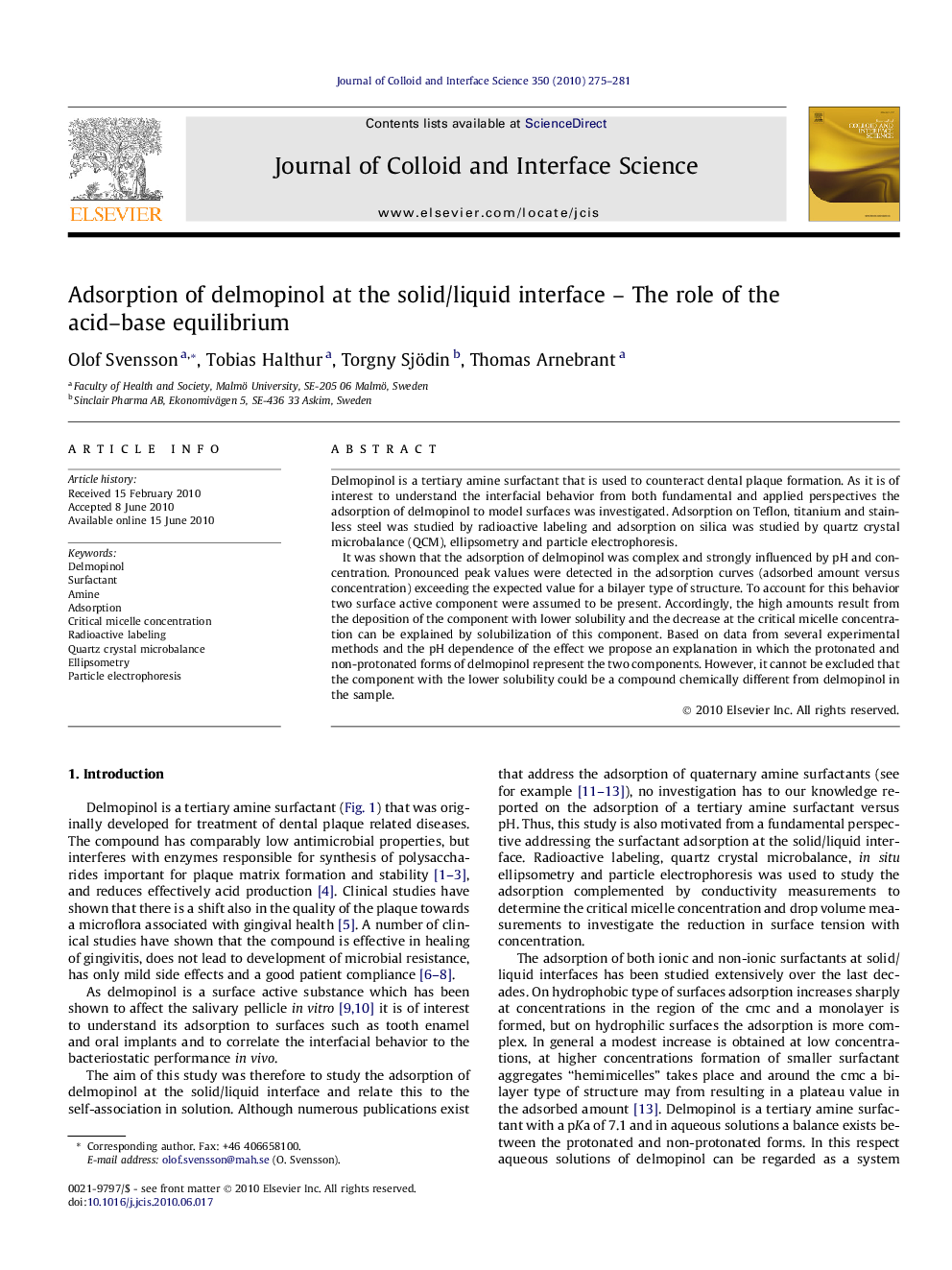| Article ID | Journal | Published Year | Pages | File Type |
|---|---|---|---|---|
| 609496 | Journal of Colloid and Interface Science | 2010 | 7 Pages |
Delmopinol is a tertiary amine surfactant that is used to counteract dental plaque formation. As it is of interest to understand the interfacial behavior from both fundamental and applied perspectives the adsorption of delmopinol to model surfaces was investigated. Adsorption on Teflon, titanium and stainless steel was studied by radioactive labeling and adsorption on silica was studied by quartz crystal microbalance (QCM), ellipsometry and particle electrophoresis.It was shown that the adsorption of delmopinol was complex and strongly influenced by pH and concentration. Pronounced peak values were detected in the adsorption curves (adsorbed amount versus concentration) exceeding the expected value for a bilayer type of structure. To account for this behavior two surface active component were assumed to be present. Accordingly, the high amounts result from the deposition of the component with lower solubility and the decrease at the critical micelle concentration can be explained by solubilization of this component. Based on data from several experimental methods and the pH dependence of the effect we propose an explanation in which the protonated and non-protonated forms of delmopinol represent the two components. However, it cannot be excluded that the component with the lower solubility could be a compound chemically different from delmopinol in the sample.
Graphical abstractAdsorption of delmopinol hydrochloride on Teflon, titanium and stainless steel investigated by radioactive labeling.Figure optionsDownload full-size imageDownload high-quality image (77 K)Download as PowerPoint slideResearch highlights► Maxima in the adsorbed amount versus concentration curves are observed below the cmc. ► The maxima suggest the presence of two surface active components. ► The two components responsible for this behavior may be the protonated and non-protonated forms.
